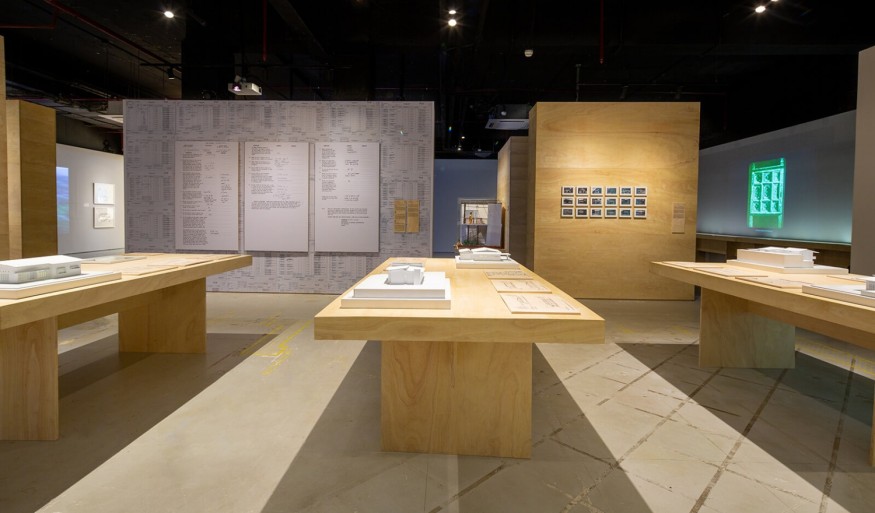MMCA Exhibition Delves Into Minette De Silva’s Architectural Legacy in Sri Lanka

In the narrative of modernism in South Asia, the spotlight has often been on male architects, particularly those from India, who dominated the scene in the 1960s-1970s. However, recent recognition has shed light on the significant contributions of women such as Urmila Eulie Chowdhury, Gira Sarabhai, and Pravina Mehta to the architecture of newly independent nations. Among these trailblazers stands Minette de Silva, self-styled as an "Asian woman architect," whose work challenges the patriarchal lineage of the architectural canon.
An Invisible Trailblazer
If Geoffrey Bawa has been celebrated as the man who introduced tropical modernism into the land of Sri Lanka, Minette de Silva has led a relatively invisible life for the groundbreaking work she conducted in Sri Lankan modernism. In spite of having a very productive career and being very dedicated to innovative design, only a few of de Silva's works remain today, among them being her residence, Jayawardena House. Realizing the importance of conserving her legacy and exploring her influence on Sri Lankan architecture, an exhibition at the Museum of Modern and Contemporary Art in Colombo dives deep into one of de Silva's most important projects: the Watapuluwa Housing Scheme.
The Watapuluwa scheme, developed in response to socio-political changes following Sri Lanka's independence in 1948, aimed to provide affordable housing for government employees amidst a population boom. Completed in 1958, the housing design was ahead of its time, offering accommodation for a diverse community of public servants. Minette de Silva's approach to the project was participatory, involving residents in the master planning process to ensure the scheme met their needs.
Centering on Architectural Impact
Rather than focusing solely on de Silva, the exhibition, titled "88 Acres: The Watapuluwa Housing Scheme by Minette de Silva," centers on her work and the transformative impact of the housing project. Through a specially commissioned film by contemporary artists, the exhibition explores the scheme's design process, socio-cultural significance, and lasting legacy in Sri Lankan architecture.

Innovative Design Principles
The exhibition highlights de Silva's innovative design principles, prioritizing resource efficiency, cost-effectiveness, and community engagement. Her emphasis on traditional materials and techniques, combined with a deep understanding of local contexts, resulted in housing that fostered a sense of belonging and community spirit among residents.
By examining the Watapuluwa project in depth, the exhibition offers insights into de Silva's broader architectural philosophy and the evolution of her practice. It highlights her experimentation with flexible living spaces, sustainable building practices, and integration of local craftsmanship- a testament to her progressive approach to architecture.
The multi-dimensional narrative of the exhibition through the selected excerpts from de Silva's writing and those of contemporary scholars also provides a comprehensive grasp of her work, which is unfortunately incomplete since the original drawings and models are lost. "Is this an architectural documentary? (2023)" is a well-thought-out and articulated explanation of how the housing scheme affected society.
Inviting Critical Reflection
The significance of de Silva's legacy extends beyond architectural innovation. Her work challenges universalizing narratives of modernism, offering alternative perspectives rooted in gender, caste, and race. By expanding the canon of modern architecture to include marginalized voices, the exhibition invites reflection on the broader socio-political implications of architectural practice.
While contemporary Sri Lanka still grapples with issues such as the ongoing economic crisis and housing shortages, de Silva's philosophy of austerity, backed by community-centered design, remains a teaching beacon. It is through reminders such as these that her name, her meaning in life, was an obligation of the architect to confront social inequalities and environmental concerns with art in the form of a design.
In essence, the exhibition at MMCA Sri Lanka not only celebrates Minette de Silva's groundbreaking contributions to Sri Lankan architecture but also invites critical reflection on the role of architecture in shaping society. By amplifying alternative narratives and redefining the canon of modernism, the exhibition offers a compelling vision for the future of architecture- one that embraces diversity, inclusivity, and social responsibility.










